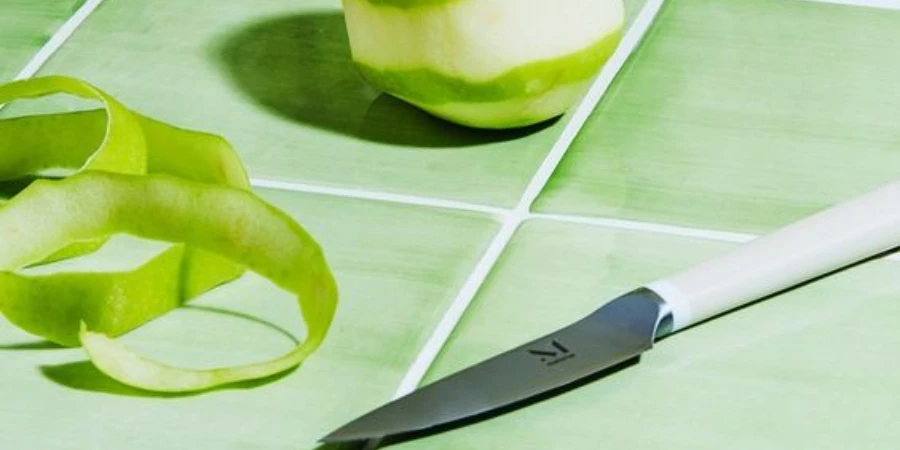Paring knives are quintessential tools in culinary settings, designed for tasks that demand precision and fine control. Often overshadowed by their larger counterparts, these small yet mighty instruments cater to detailed cutting and peeling, proving indispensable for a wide range of kitchen operations. From peeling fruits and mincing garlic to intricate garnishing, a high-quality paring knife ensures efficiency and accuracy. For those in charge of equipping commercial kitchens or culinary enterprises, selecting the right paring knives can significantly enhance food preparation processes, reflecting directly on the quality of food served and the overall workflow efficiency.
Table of Contents
1. Paring knife varieties and applications
2. Market insights for paring knives
3. Criteria for selecting paring knives
4. Leading paring knife models and features
1. Paring knife varieties and applications
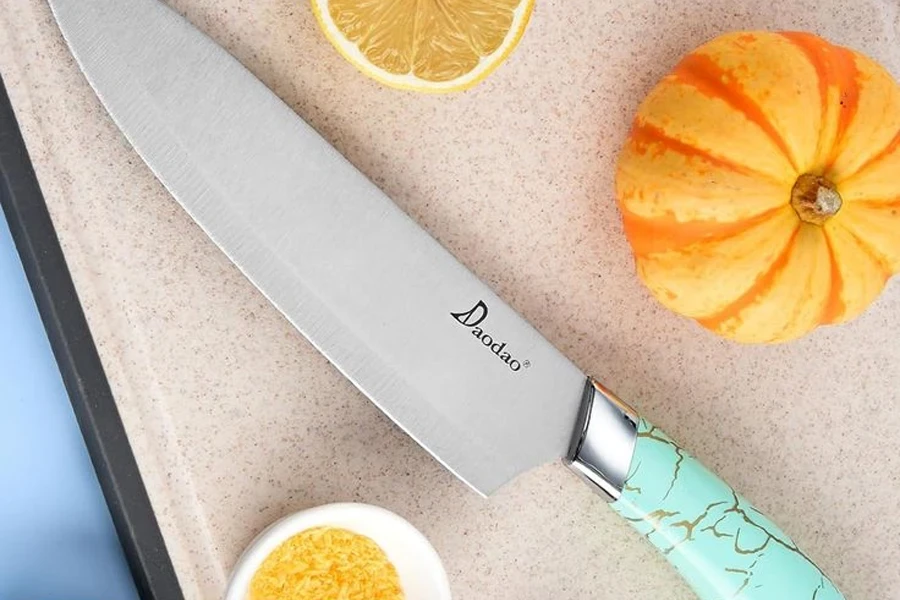
Paring knives are integral to culinary precision, offering unmatched versatility in professional kitchens. As small, sharp instruments, these knives fulfill a critical role in detailed food preparation tasks that larger knives cannot handle with the same finesse.
Different types of paring knives
The paring knife category encompasses several distinct types, each designed for specific tasks and user preferences. The classic spear point paring knife remains a staple due to its smooth, short blade ideal for peeling, slicing, and coring fruits and vegetables. Its curved design allows minimal pressure during use, making it a multi-purpose tool suitable for various kitchen tasks.
Another specialized form is the bird’s beak paring knife, known for its concave, sickle-shaped blade that excels in peeling and coring. Its sharp tip and curved edge facilitate intricate cuts and decorative work, making it a favorite for tasks requiring exceptional precision.
The sheep’s foot paring knife features a straight blade with a rounded tip, which only touches the cutting board at the point, making it perfect for julienne cuts and slicing soft or hard cheeses. Its design promotes longevity and sharpness, appealing to those needing durable, precise cutting tools.
Lastly, the Western-style Japanese paring knife combines elements of traditional and modern designs with a less-curved blade made from harder steel for sharper and more controlled cuts. This type is particularly valued for intricate cutting tasks and garnishing, offering superior control and sharpness.
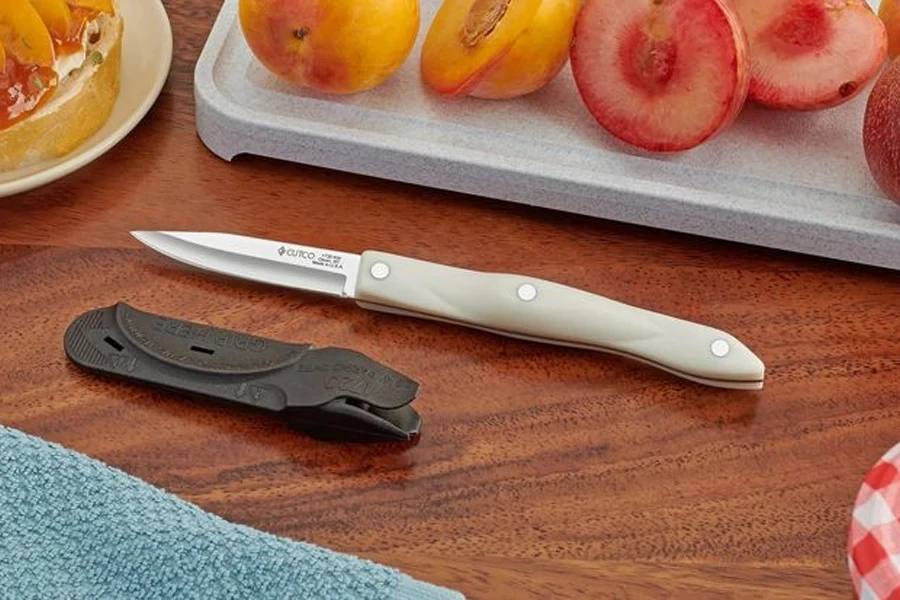
Applications in the kitchen
Paring knives are tailored for operations that require accuracy and gentle handling. Their applications range from peeling and slicing vegetables and fruits to more specialized tasks such as deveining shrimp, shucking oysters, or carving small meat cuts. In professional settings, these knives enable chefs to perform delicate preparations with precision, contributing to the final presentation and quality of dishes.
Each type of paring knife offers unique benefits. For instance, the spear point is versatile for general peeling and slicing, while the bird’s beak excels in decorative work and the sheep’s foot is preferred for precise, waste-minimizing cuts. In selecting a paring knife, culinary professionals consider the specific tasks it will be used for, ensuring each knife’s features align with the intended culinary applications.
The choice of a paring knife also involves considering the material and handle design, which affect the knife’s balance, control, and comfort during use. These aspects are crucial as they directly influence the efficiency and safety of food preparation processes in high-demand culinary environments.
2. Market insights for paring knives
Experts currently value the global paring knives market at USD XX billion as of 2023 and project it to reach USD XX billion by 2030. This growth is anticipated to occur at a compound annual growth rate (CAGR) of XX% from 2024 to 2031. This expansion reflects the ongoing advancements in knife manufacturing technologies and shifting consumer preferences toward high-quality culinary tools.
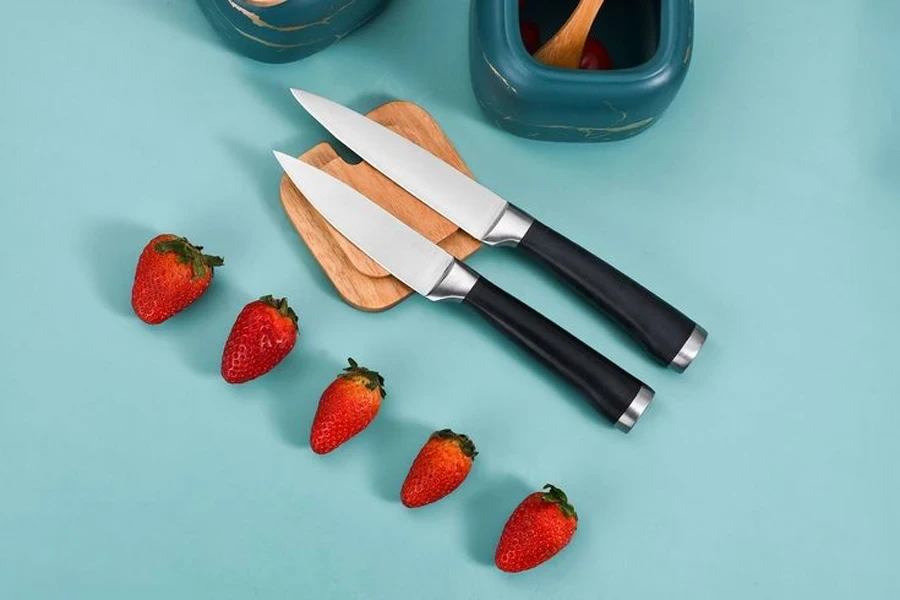
Current trends in knife purchasing
The paring knives market is currently experiencing significant growth, driven by advancements in material technology and design innovations. A recent analysis predicts that the market size for paring knives is expected to reach USD XX.X billion by 2031, marking a steady growth from USD XX.X billion in 2023. This growth is fueled by a combination of technological breakthroughs and an increase in consumer awareness, which are propelling the demand for high-quality paring knives. The integration of new materials and precision engineering continues to enhance the functionality and durability of these knives, making them indispensable tools in both professional kitchens and domestic settings.
Strategic partnerships and collaborations within the industry are also fostering innovation, with companies focusing on crafting knives that meet the specific needs of professional chefs and culinary enthusiasts alike. Furthermore, supportive regulatory frameworks are bolstering this growth, allowing easier market entry for new designs and products.
Consumer preferences and demand
Consumer demand for paring knives is increasingly shaped by the quest for ergonomics and precision in culinary tasks. Preferences have shifted towards lightweight, balanced knives that offer better control and minimal fatigue, which is critical in professional settings where knives are used extensively. The demand for eco-friendly materials and sustainability in manufacturing processes is also influencing consumer choices, pushing brands to adopt greener practices.
Styles and features favored in the market vary across different culinary environments. In professional settings, there is a marked preference for knives that integrate advanced blade materials such as high-carbon stainless steel for sharper, more durable edges. Home cooks are showing a preference for versatile designs that can perform a variety of tasks with ease, such as multi-purpose spear point paring knives.
Moreover, the market is seeing a trend towards customization and personalization, with consumers seeking knives that are not only functional but also aesthetically pleasing and reflective of personal style. As the paring knife market continues to expand, these consumer insights help manufacturers and businesses align their products with evolving market needs, ensuring that they offer both innovation and value to their customers.
3. Criteria for selecting paring knives
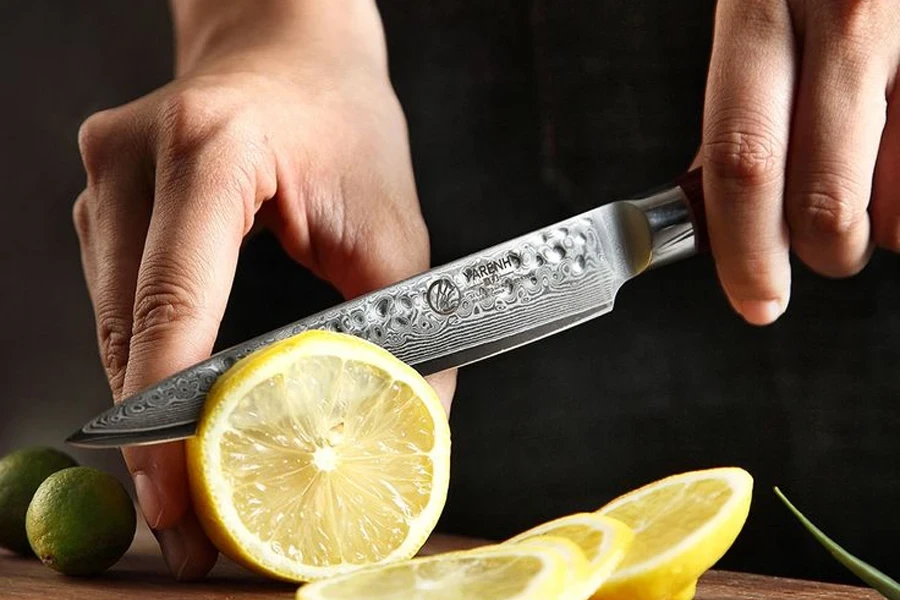
Material and construction
The choice of material and construction of paring knives is pivotal in determining their longevity and performance. A paring knife must possess a blade of high-quality steel, such as high-carbon stainless steel or ceramic, to ensure sharpness and durability. High-carbon stainless steel is particularly prized for its ability to maintain a sharp edge while resisting corrosion, making it ideal for frequent use in demanding kitchen environments. The construction of the knife also plays a critical role, with forged knives generally offering more strength and balance than stamped knives, though they are typically heavier and more expensive.
The handle design is equally crucial as it affects the knife’s overall balance and the user’s comfort during prolonged use. Handles can be made from a variety of materials, including wood, plastic, or composite, each offering different levels of grip and ergonomic benefits. For example, wooden handles provide a classic look and a comfortable grip but require more maintenance to keep them from absorbing moisture and odors.
Design and ergonomics
The design and ergonomics of a paring knife are essential factors in its selection. The knife should feel comfortable and balanced in the hand, facilitating ease of use and reducing fatigue during intricate cutting tasks. The length and shape of the blade should complement the specific tasks it is intended for, with shorter blades generally providing more control for peeling and trimming, while longer blades are better suited for chopping tasks.
Good ergonomics also involves the knife’s weight distribution between the blade and handle. A well-balanced knife reduces strain on the wrist and hand, enhancing control and precision. Additionally, the handle should be designed to prevent slipping, even when wet, ensuring safety and efficiency in fast-paced kitchen settings.
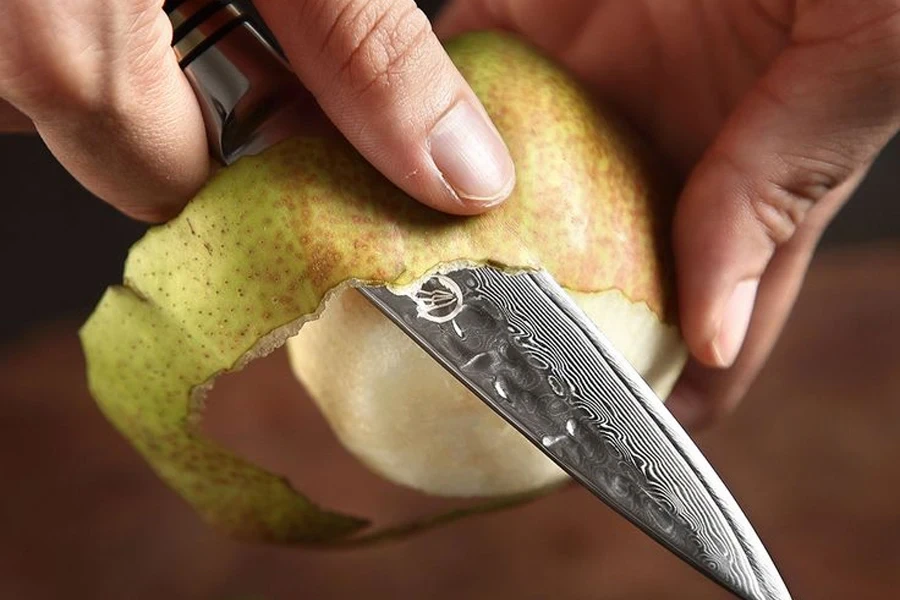
Price and brand reputation
Price and brand reputation are significant considerations in the selection of paring knives. While higher-priced knives often reflect superior craftsmanship and materials, there are quality options available at various price points that can meet the needs of different budgets. Brands with a strong reputation in the culinary industry often guarantee a certain level of quality and reliability, backed by warranties and customer service.
Investing in a reputable brand can also assure culinary professionals of the knife’s longevity and consistent performance. Many established brands have a history of innovation and commitment to quality that can significantly influence a buyer’s decision, making brand reputation a key factor in the selection process.
The criteria for selecting paring knives intertwine to define the tool’s effectiveness and suitability for specific culinary tasks. Material quality, ergonomic design, and cost-effectiveness play foundational roles in ensuring that culinary professionals and enthusiasts alike make informed choices that enhance their cooking experience and outcomes.
4. Leading paring knife models and features

Review of top models for 2024
The market for paring knives in 2024 showcases a range of models that excel in precision and durability, catering to both professional chefs and culinary enthusiasts. One standout is the Wüsthof Classic Ikon Paring Knife, widely praised for its quality construction and exceptional balance, making it a top choice for those willing to invest in premium cutlery. Another notable model is the Victorinox Swiss Classic, which offers great value with its sharpness and ergonomic handle design, ideal for daily kitchen tasks.
Additionally, the Global Classic Paring Knife features a unique, seamless construction and a razor-sharp edge that glides through ingredients with minimal effort. Its stainless steel handle is both sleek and functional, providing a comfortable grip for precise control. Each of these models demonstrates the critical role of material quality and thoughtful design in enhancing the cooking experience.

Comparison of features
When comparing the features of leading paring knives, several key attributes stand out. The Wüsthof Classic Ikon boasts a forged high-carbon stainless steel blade that maintains sharpness over extensive use, coupled with a contoured handle that fits naturally in the hand for comfort during prolonged use. In contrast, the Victorinox Swiss Classic offers a more budget-friendly option with its stamped blade that still achieves excellent sharpness and a lightweight handle that reduces fatigue.
The Global Classic differs with its all-stainless steel construction, which not only provides a modern appearance but also ensures easy maintenance and robust durability. This knife’s blade is crafted from CROMOVA 18 stainless steel, known for its edge retention and resistance to rust and corrosion.
The comparison of these models highlights the importance of selecting a paring knife that not only fits the user’s budget but also meets their specific needs in terms of blade sharpness, handle comfort, and overall durability. Whether for intricate culinary tasks or everyday kitchen use, the right paring knife can significantly enhance precision and efficiency in food preparation.
Conclusion
Selecting the right paring knife involves careful consideration of materials, design, and brand reputation, tailored to specific culinary needs and environments. The evolving market trends highlight a growing preference for ergonomically designed, durable knives that offer precision in food preparation. For businesses and culinary professionals, understanding these trends and features ensures the acquisition of tools that enhance efficiency and culinary artistry, underlining the importance of quality and functionality in paring knives.
